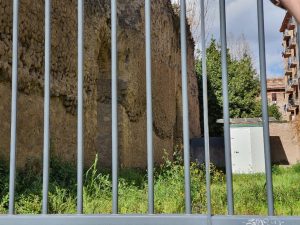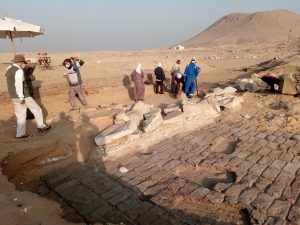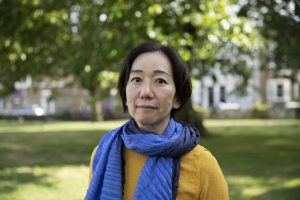Our undergraduate student, Kieran Evans, shares their experience from the first departmental study trip to Rome after the pandemic—in April 2022—along with a series of exciting and wonderful pictures of Rome! Thank you to everyone who participated to this trip, and particularly to Profs Amy Smith and Matthew Nicholls who organised it and led the tour!
It started with a 2:15am meetup at the Sports Park building on campus to catch a coach for Heathrow. We left extra early just to make sure we had enough time for any delays or queues caused by COVID-19 restrictions at the airport. Despite being early hours of the morning, everyone was raring to go to Rome, bags packed, and the anticipation of getting to the airport was at a high. We just had to get through security then a rather long wait for the flight at 7am.
 The arrival into Rome, after the flight and coach journey, was only the start of the day in the ‘Eternal city’. We checked into our hotel in the afternoon, to get set for the first trek of the trip. Matthew Nicholls, our tour lead who came over from Oxford University, but in his role as Visiting Professor at University of Reading, walked us through some parts of the southern part of the city, checking out Roman building remains, seeing what remained of the concrete. One major theme of the trip was the material left behind in buildings, mostly the concrete that the marble would have covered up. From the first tour we saw how the massive structures, like the Porticus Aemilia, a long series of arched warehouses for food storage, or acting as a naval dockyard. They were impressive to look at, considering the size and how long they’ve been around, but like many Roman buildings the concrete lost the marble exterior, looted for other construction, or turned into lime. That same afternoon we came across one of the best views of the trip. From the top of the Aventine Hill, you could see across the city with St. Peter’s Basilica to the north peeking above the buildings before it. It became somewhat a preview of what to expect for the coming days, just spectacular.
The arrival into Rome, after the flight and coach journey, was only the start of the day in the ‘Eternal city’. We checked into our hotel in the afternoon, to get set for the first trek of the trip. Matthew Nicholls, our tour lead who came over from Oxford University, but in his role as Visiting Professor at University of Reading, walked us through some parts of the southern part of the city, checking out Roman building remains, seeing what remained of the concrete. One major theme of the trip was the material left behind in buildings, mostly the concrete that the marble would have covered up. From the first tour we saw how the massive structures, like the Porticus Aemilia, a long series of arched warehouses for food storage, or acting as a naval dockyard. They were impressive to look at, considering the size and how long they’ve been around, but like many Roman buildings the concrete lost the marble exterior, looted for other construction, or turned into lime. That same afternoon we came across one of the best views of the trip. From the top of the Aventine Hill, you could see across the city with St. Peter’s Basilica to the north peeking above the buildings before it. It became somewhat a preview of what to expect for the coming days, just spectacular.
 On day Two we visited monuments fitting the theme ‘Landscape of Victory’. Amy and Matthew had organised entering the Mausoleum of Augustus, very recently opened to the public. Such a grand monument which held the first imperial dynasty, was left in a state of ruin for years and recently restored for visitors to re-enter. Walking through the crypt we saw how the material again was laid bare, and how the diamond patterns bricks were organised into in the concrete. Some marble—the only marble left—greeted us at the entrance telling of how this place held the ashes of Augustus and his family. The building was remarkable to walk through. Like at all sites on the trip, Matthew and Amy told us everything there was to know, the way it looked when constructed, a wedding cake style of tiers of earth and trees planted on top and the history following. Somewhat surprising to hear was that, when the top tier collapsed, it filled the interior to create a new ground level above the original entrance and a space for a bull fighting arena. 16th-century entertainment turned it into a stage for the sport, then a theatre in the 20th century. It’s restored and the grand entrance is the only way in now, not the archway some 30 feet above it.
On day Two we visited monuments fitting the theme ‘Landscape of Victory’. Amy and Matthew had organised entering the Mausoleum of Augustus, very recently opened to the public. Such a grand monument which held the first imperial dynasty, was left in a state of ruin for years and recently restored for visitors to re-enter. Walking through the crypt we saw how the material again was laid bare, and how the diamond patterns bricks were organised into in the concrete. Some marble—the only marble left—greeted us at the entrance telling of how this place held the ashes of Augustus and his family. The building was remarkable to walk through. Like at all sites on the trip, Matthew and Amy told us everything there was to know, the way it looked when constructed, a wedding cake style of tiers of earth and trees planted on top and the history following. Somewhat surprising to hear was that, when the top tier collapsed, it filled the interior to create a new ground level above the original entrance and a space for a bull fighting arena. 16th-century entertainment turned it into a stage for the sport, then a theatre in the 20th century. It’s restored and the grand entrance is the only way in now, not the archway some 30 feet above it.
 My personal highlight of the trip was later in the day on visiting another monument, the Pantheon. Despite looking majestic from the front with the granite columns and inscription to Agrippa, it took a second to realise what I was looking at when we approached it from the south, only seeing the circular, brick building. Of course, when I finally recognised it, I got a little giddy. About an hour and a half before entering we had a lunch break and some of us found a restaurant on the piazza of the Pantheon. It was somewhat surreal sitting there eating proper Italian pizza and looking at the entrance of this building less than a hundred metres to my left.
My personal highlight of the trip was later in the day on visiting another monument, the Pantheon. Despite looking majestic from the front with the granite columns and inscription to Agrippa, it took a second to realise what I was looking at when we approached it from the south, only seeing the circular, brick building. Of course, when I finally recognised it, I got a little giddy. About an hour and a half before entering we had a lunch break and some of us found a restaurant on the piazza of the Pantheon. It was somewhat surreal sitting there eating proper Italian pizza and looking at the entrance of this building less than a hundred metres to my left.
 The group that went on the trip were great, insofar as everyone got on so well with each other, making meals out easier and so much more fun. Especially the final evening we all had in Rome, dining at Il Matto and drinking plenty of red wine with the excellent food. Amy and Matthew organised an amazing series of tours across the 6 days we were there. I cannot think of how that trip could have been better… maybe if we had another day there?
The group that went on the trip were great, insofar as everyone got on so well with each other, making meals out easier and so much more fun. Especially the final evening we all had in Rome, dining at Il Matto and drinking plenty of red wine with the excellent food. Amy and Matthew organised an amazing series of tours across the 6 days we were there. I cannot think of how that trip could have been better… maybe if we had another day there?



























